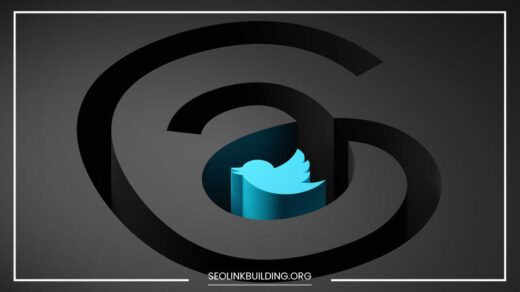Launch Your Graphic Design Business: A Complete Guide

Graphic Design Business
Unleashing Creativity: A Comprehensive Guide to Building Your Thriving Graphic Design Business
The world thrives on visual communication. From the iconic swoosh of Nike to the minimalist elegance of Apple’s logo, captivating design shapes our perception of brands, influences user experiences, and leaves a lasting impression.
Graphic designers are the creative minds behind these visual narratives, crafting the elements that inform, engage, and inspire. If you possess a passion for visual storytelling and the technical skills to bring it to life, then starting a graphic design business might be the perfect path to unleash your creativity and build a fulfilling career.
This comprehensive guide delves into the exciting and empowering world of building your own graphic design business.
We’ll explore everything from defining your niche and crafting a compelling portfolio to client acquisition strategies, essential business practices, and fostering a sustainable and successful creative career.
Finding Your Design Niche: Specialization is Your Strength
The world of graphic design is vast, encompassing an exciting array of specializations. Choosing a niche allows you to focus on a specific design area, develop in-depth expertise, and attract clients seeking tailored services. Here are some popular niches to consider:
- Brand Identity & Logo Design: Become a brand whisperer! Specialize in crafting logos, brand style guides, and visual elements that define a brand’s unique identity. Your expertise will be in understanding the essence of a company, its target audience, and translating that into a powerful visual representation that resonates and leaves a lasting impression.
- Web & User Interface (UI) Design: Shape the digital landscape! Focus on designing user interfaces for websites and applications, ensuring a seamless and aesthetically pleasing user experience. Your skills will be in high demand as businesses increasingly prioritize user-centric design for websites and mobile apps.
- Marketing & Advertising Design: Grab attention and drive results! Create eye-catching visuals for marketing materials, brochures, advertisements, and social media content. Your expertise will lie in understanding marketing principles and using design to capture attention, communicate messages effectively, and ultimately drive conversions.
- Packaging Design: Make products pop off the shelf! Develop packaging solutions that are not only functional but also visually appealing and communicate the brand’s message effectively. Your skills will be in understanding consumer psychology, product positioning, and designing packaging that stands out in a crowded marketplace.
- Publication Design: Craft compelling layouts! Specialize in designing layouts and visuals for magazines, books, newspapers, and other print publications. Your knowledge of typography, layout principles, and visual storytelling will be crucial in creating publications that are not only informative but also visually engaging.
Building a Stellar Portfolio: Your Visual Resume
Your portfolio is your most valuable asset as a graphic designer. It’s a curated showcase of your skills, experience, and design aesthetic. Here’s how to create a stellar portfolio that wows potential clients:
- Quality over Quantity: Don’t overwhelm viewers with a large volume of work. Select projects that represent your strongest design skills and showcase your versatility. Focus on projects that align with your chosen niche or demonstrate your ability to adapt to different design styles.
- Cater to Your Niche: Prioritize projects relevant to your chosen niche. If you specialize in logo design, showcase a variety of logos that cater to different industries. This allows clients to envision how your expertise can translate to their specific needs.
- Presentation is Key: Invest in a clean and user-friendly portfolio website. Ensure high-quality visuals with clear descriptions of each project. Include details about the project goals, target audience, and the design solutions implemented. Consider incorporating case studies that showcase the impact of your design work on the client’s business.
Crafting a Winning Business Plan: Your Roadmap to Success
A well-defined business plan serves as a roadmap for your graphic design venture. It outlines your goals, target audience, marketing strategy, financial projections, and operational plan. Having a plan helps you stay focused, make informed decisions, and secure funding if needed. Here are some key elements to include in your business plan:
- Executive Summary: A concise overview of your business, its mission, vision, and its value proposition. This is your elevator pitch, highlighting what makes your design services unique and valuable to clients.
- Market Analysis: Define your target market. Who are your ideal clients? Identify their needs, understand their design preferences, and analyze your competition. Knowing your market landscape allows you to tailor your services and position yourself strategically.
- Services Offered: Clearly outline the design services you provide and how they address your target market’s needs. Do you offer logo design packages? Website design services? Social media graphics creation? Be specific and highlight any specialized services you offer.
- Marketing & Sales Strategy: Define your strategies for attracting clients, building brand awareness, and generating leads. This could include online marketing strategies, content marketing, networking, and potential partnerships.
- Financial Projections: Estimate your startup costs, including software licenses, website development, marketing materials, and ongoing operational expenses such as equipment maintenance and continuing education. Project your revenue based on your pricing strategy and anticipated client base. This financial roadmap helps you assess the viability of your business and secure funding if needed.
Marketing Your Design Business: Standing Out in the Crowd
In today’s digital age, a robust online presence is crucial for attracting clients. Here are some effective marketing strategies to showcase your design expertise and build a thriving business:
- Build a Strong Website: Your website serves as your digital storefront. Showcase your portfolio prominently, clearly outline your services and pricing, and include a compelling “About Me” section that tells your design story and highlights your experience. Ensure a user-friendly experience with easy navigation and clear calls to action, encouraging visitors to contact you for project inquiries.
- Content Marketing: Become a thought leader in your niche! Create informative blog posts or share design tips and trends on social media. You can also develop case studies that showcase the impact of your design work on past clients. This content marketing strategy establishes you as an expert, attracts potential clients seeking design solutions, and helps build trust and credibility.
- Social Media Marketing: Actively engage on platforms relevant to your niche. Platforms like Instagram, Behance, or Dribbble are great for showcasing your design work in a visually appealing way. Share design inspiration, industry news, and engage with other designers and potential clients. Utilize relevant hashtags to increase your reach and participate in online design communities to build your network.
- Networking: Build relationships and connect with potential clients. Attend industry events, workshops, or conferences. Join online design communities and forums. Collaborate with other creatives on projects. Networking not only helps you find clients but also allows you to learn from others and stay informed about industry trends.
- Client Testimonials: Positive feedback from satisfied clients adds social proof and builds trust. Encourage clients to leave testimonials on your website or social media profiles. You can also showcase client logos on your website to demonstrate the brands you’ve worked with.
The Business of Design: Essential Practices for Success
Running a successful graphic design business goes beyond creative skills. Here are some key business practices to ensure smooth operations, financial stability, and client satisfaction:
- Client Contracts: Protect yourself and your clients by formalizing agreements through contracts. Clearly define project scope, fees, deadlines, revision policies, and payment terms. A well-defined contract ensures everyone is on the same page and minimizes misunderstandings.
- Pricing Strategy: Research industry standards and determine pricing for your services based on your experience, skill level, and project complexity. Consider offering package deals for multiple services or hourly rates depending on your project structure. Be confident in your value and communicate your pricing structure transparently.
- Project Management: Develop a system for managing projects efficiently. Utilize project management tools to track tasks, deadlines, client communication, and revisions. Keeping projects organized ensures timely completion, client satisfaction, and helps you avoid last-minute scrambling.
- Time Management: As a freelance designer, effective time management is crucial. Utilize scheduling tools, prioritize tasks realistically, and set clear deadlines for yourself and your clients. Utilize time management techniques like the Pomodoro Technique to stay focused and avoid burnout.
- Financial Management: Maintain separate business and personal finances. Track your income and expenses diligently. Utilize accounting software to simplify bookkeeping and generate reports that provide insights into your business performance. Be prepared to pay estimated taxes quarterly and consider consulting a tax professional to ensure you comply with tax regulations.
Building a Sustainable Creative Career: Beyond the Basics
Building a successful graphic design business is a marathon, not a sprint. Here are some additional tips to foster a sustainable and fulfilling creative career:
- Lifelong Learning: The design industry is constantly evolving. Stay ahead of the curve by dedicating time to continuous learning. Take online courses, attend workshops, and explore new design trends and software. Invest in professional development to enhance your skills and broaden your design expertise.
- Work-Life Balance: As a creative entrepreneur, it’s easy to get caught up in work. Establish healthy boundaries between work and personal life. Schedule breaks, disconnect after work hours, and prioritize self-care. A healthy work-life balance helps you avoid burnout and fosters long-term creative sustainability.
- Building a Brand: Your business is your brand. Develop a brand identity that reflects your design aesthetic and values. This includes your logo, website design, and social media presence. Building a strong brand helps you attract clients who resonate with your design style and approach.
- Networking & Collaboration: Connect with other creatives! Join online communities, attend industry events, and collaborate with other designers on projects. Building a network of fellow designers allows you to share ideas, learn from each other’s experiences, and potentially find referral opportunities. Collaboration on projects can bring fresh perspectives, enhance creativity, and lead to even more fulfilling design solutions.
- Giving Back to the Community: Share your knowledge and expertise! Consider mentoring aspiring designers, volunteering your design skills for non-profit organizations, or offering workshops or speaking engagements. Giving back not only benefits the community but also allows you to build your reputation and establish yourself as a leader in your field.
- Legal and Tax Considerations: Familiarize yourself with the legal and tax implications of running a graphic design business. Depending on your location, you might need to register your business, obtain business licenses, and comply with specific tax regulations. Consulting with a lawyer and accountant can ensure you operate legally and handle your finances effectively.
Final Word: Thriving as a Graphic Designer
The path to building a successful graphic design business is paved with creativity, dedication, and strategic planning. By honing your design skills, defining your niche, and establishing a strong brand identity, you can attract clients who value your unique perspective. Remember, the journey is just as important as the destination.
Embrace lifelong learning, foster a healthy work-life balance, and build a supportive network within the design community.
With passion, perseverance, and these valuable tips, you can transform your design vision into a thriving and fulfilling graphic design business.
Additional Resources:
- American Institute of Graphic Arts (AIGA): https://www.aiga.org/
- The Futur: https://thefutur.com/people/chris-do
- Design Shack: https://designshack.net/
This guide equips you with the essential tools and knowledge to navigate the exciting world of graphic design entrepreneurship. Now, it’s your turn to unleash your creativity and embark on a rewarding journey of building your dream design business!













